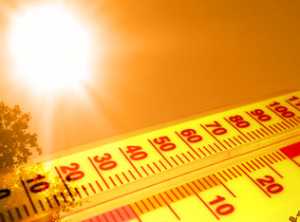I received an email today asking if milk would be just as effective as water for rehydrating a two year old after they’ve been in the heat and lost fluids. The research I found was eye-opening.
Here’s my reply to the email. Th e name and personal information was deleted for personal privacy.
e name and personal information was deleted for personal privacy.
Thank you for your question.
My original hunch that water is still the best home remedy for replenishing vital lost fluids still seems to be the general consensus for most medical professionals(Source). But there is an interesting study that was done in the UK where skim-milk was used for re-hydration and the study revealed that based on urine output, the skim milk may have been better absorbed than any other liquid.(Source)
There was a study that showed that milk did not replace fluids as well as water because of the fat content found in all milk. Probably why the above study calls for skim milk instead of 2% or Whole Milk. Skim is the lowest fat content of all the options.
Let’s take a look at what the study found.
“It is likely that the presence of sodium along with a relatively large quantity of potassium (approximately 45 mmol/l) in milk accounts for the effectiveness of milk at restoring fluid balance following exercise-induced dehydration,” they said.
“The results suggest that milk is more effective at replacing sweat losses and maintaining euhydration than plain water or a commercially available sports drink following exercise-induced dehydration by approximately two per cent of initial body mass,” added the researchers.
“Given that hypohydration results in an increase in cardiovascular and thermoregulatory strain, and a reduction in exercise capacity in the heat, it is important to ensure that fluid losses accrued during exercise are replaced prior to the performance of a subsequent exercise bout,” they concluded.
Commenting on the research, Judith Bryans, director of The Dairy Council, said: “This study joins the growing volume of literature which suggests that skimmed milk is a natural and effective post exercise recovery aid. Drinking milk is not only a valuable way to re-hydrate the body but also provides an excellent source of energy, protein and a vast array of different vitamins and minerals essential to the good health of hardworking sportspeople and the population as a whole.”
In the UK, semi-skimmed, or half-fat milk, now accounts for 60 per cent of total milk sales. Skimmed milk is also growing in popularity, now accounting for a further 14 per cent of the total.
Source: British Journal of Nutrition
Volume 98, Pages 173-180
“Milk as an effective post-exercise rehydration drink”
Authors: S.M. Shirreffs, P. Watson, R.J. Maughan
What’s important to remember in all of this is that unless there is a situation where prevention is not possible, like being lost in the wilderness, a plane crash, a disaster, etc… prevention is the way to combat most of the de-hydration problems. The goal is to have persons drink at least 8-12oz. of hydrating fluid every hour during hot temperatures and during exertion and replace what we lose whenever needed.
In order to recognize the symptoms of dehydration we should probably take a look at some of the symptoms.
Mild to moderate dehydration is likely to cause:
* Dry, sticky mouth
* Sleepiness or tiredness — children are likely to be less active than usual
* Thirst
* Decreased urine output — fewer than six wet diapers a day for infants and eight hours or more without urination for older children and teens
* Few or no tears when crying
* Muscle weakness
* Headache
* Dizziness or lightheadedness
Severe dehydration, a medical emergency, can cause:
* Extreme thirst
* Extreme fussiness or sleepiness in infants and children; irritability and confusion in adults
* Very dry mouth, skin and mucous membranes
* Lack of sweating
* Little or no urination — any urine that is produced will be dark yellow or amber
* Sunken eyes
* Shriveled and dry skin that lacks elasticity and doesn’t “bounce back” when pinched into a fold
* In infants, sunken fontanels — the soft spots on the top of a baby’s head
* Low blood pressure
* Rapid heartbeat
* Fever
* In the most serious cases, delirium or unconsciousness
Unfortunately, thirst isn’t always a reliable gauge of the body’s need for water, especially in children and older adults. A better barometer is the color of your urine: Clear or light-colored urine means you’re well hydrated, whereas a dark yellow or amber color usually signals dehydration.
Treating severe dehydration
Children and adults who are severely dehydrated should be treated by emergency personnel arriving in an ambulance or in a hospital emergency room, where they can receive salts and fluids through a vein (intravenously) rather than by mouth. Intravenous hydration provides the body with water and essential nutrients much more quickly than oral solutions do — something that’s essential in life-threatening situations.
Source
Now that we know what dehydration looks like and the best way to treat it is to prevent it, how much water might be needed to prevent dehydration?
Let’s take a look.
Different Bodies, Different Needs
There are a multitude of factors that impact a person’s individual fluid needs – from concrete factors like age, weight, height, and genetic make-up, to more variable aspects like overall health, and environmental conditions. Given these differences, it is not hard to believe that each of us may have our own personal fluid requirement. So, while some people may in fact need eight glasses of water every day, chances are most do not. But, brace yourself – there is a very good chance that some of us actually need even more.
Eight is Just an Estimate
So, if eight isn’t the magic number for water needs, how do we actually know what we should be drinking? Unfortunately, there isn’t an easy answer. This is likely why the “8 x 8 rule” has been so popular simply because it made an otherwise complicated issue a little easier to manage. However, after careful review of the scientific literature, researchers from the University of Pennsylvania recently determined that there was no real basis for such a general recommendation. Regardless, given the fact that the average adult loses around 10 cups of water daily through their breath, sweat, feces, and urine, along with the estimate that most people meet 20% of their fluid needs through food; drinking 8 cups of water seems to be a pretty reasonable guideline. Still, it is just that – a guideline. Additional guidelines established by the Institute of Medicine take into account all beverages (including juices, coffee, tea, etc.) and suggest that men should drink approximately 13 cups of total fluid and women should drink around 9 cups of total fluid every day. Wow! And you were overwhelmed by 8?
Your Body Will Tell You What You Need
It is all a bit confusing. But, the good news is that your body does provide some clear indicators of what is best for you. Thirst is an obvious sign that your body needs more fluids, and a clear warning that you need to drink. But it isn’t always the most sensitive indicator, especially for older adults whose thirst mechanisms are not as sharp. This means that some older individuals don’t truly become thirsty until they are near dehydration. This can be dangerous because it is easier to prevent dehydration, than to try to catch up on fluids when you are already running low. A better means of assessing your fluid intake is through the color of your urine, with clear or pale yellow urine indicating a healthy fluid balance, and dark yellow or amber urine indicating dehydration. Another way of assessing your hydration status is simply by how you feel. Thirst, dizziness, confusion, fatigue, fever, and dry mouth are all symptoms of dehydration.
Water Works Wonders
You might be thinking, “What’s the big deal?” This seems to be a common response for most people, as we often take water for granted. That is of course until we are at a ball game or an amusement park, feeling parched, and our only option is to buy a four dollar bottle of water. Then, we realize just how valuable water can be! But, its value goes well beyond the amount that we shell out per bottle. The real wonder comes from all of the essential roles that water plays in the body including aiding with digestion, elimination, blood flow, and temperature regulation just to name a few. If you are not well hydrated, your body can’t work as efficiently, and you simply won’t be at your best.
Tips for Meeting Your Daily Water Needs
Although determining your fluid needs can be a bit of a challenge, actually meeting them doesn’t have to be. Here are a few tips:
* Fill a pitcher with 6-9 cups of water (based on you own personal needs) every night before going to bed and put it in the fridge to chill. When you wake up, start you day with a big glass of cold water, and continue drinking from the pitcher throughout the day until it is gone.
* Add slices of citrus fruit to your water (lemon, lime or orange) to give it a little extra flavor with no extra calories.
* Eat juicy foods like fruits and vegetables including melon, grapes, tomatoes, lettuce, and squash.
* Dilute juices and soda with 25% water, gradually increasing to 50% water as your taste buds adjust.
* Cool off beverages like coffee, lemonade, or tea with lots of ice cubes.
* Limit alcoholic beverages because they are diuretics and actually increase your fluid needs.
When the heat is on, make water your first choice. Instead of worrying about how many cups you should be getting, pay more attention to how you feel. By drinking regularly and staying ahead of thirst, you are sure to get the amount that is just right for you, no debate about it.
Source
References
* Dan Negoianu and Stanley Goldfarb. Just Add Water. J Am Soc Nephrol. 2008; 19: 1041-1043.
* Mayo Clinic Staff. Water: How much should you drink every day? MayoClinic.com. April 19, 2008. retrieved 7/21/08 LINK
* Mayo Clinic Staff. Dehydration. MayoClinic.com. Jan. 3, 2007. retrieved 7/21/08 LINK
Well John, I hope this helps. As we move into the warmer months I’m sure that we will all need to remember some these tips on recognizing, treating and preventing dehydration. And by the sounds of it, if you want to give your two year old skim milk because they like it more, and then follow that up with water, it appears that some research actually allows for that too!
Thanks for the great question and go fourth and rescue!
Best wishes,
Roy




